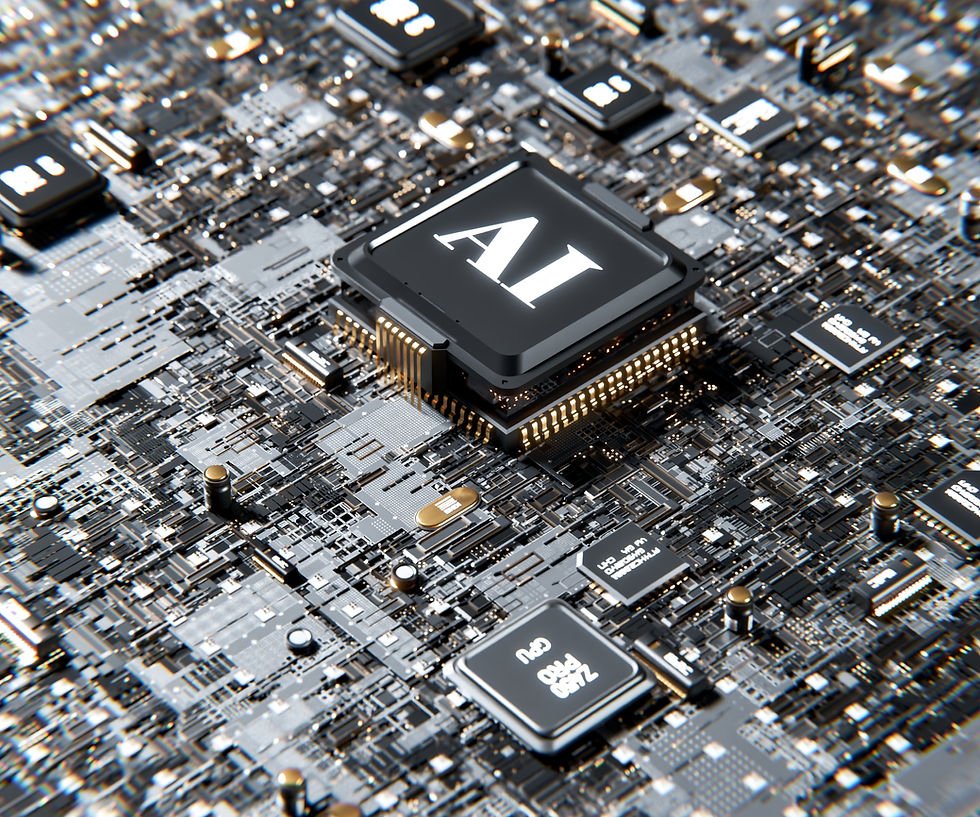AI Could Slash Global Emissions by Up to 5.4 Billion Tonnes a Year by 2035, Study Finds
- Hanaa Siddiqi
- Jun 30
- 3 min read
Updated: Jul 4

Artificial intelligence is a major power guzzler. But if used wisely, it might just help clean up the very grid it depends on. New research suggests that AI could help slash global climate pollution by as much as 5.4 billion metric tons per year over the next decade, more than enough to offset the emissions it generates. The study, published in the journal npj Climate Action by the Grantham Research Institute, highlights a surprising upside.
“The key will be to channel practical AI applications towards key impact areas to accelerate the market adoption rate and efficiency of low-carbon solutions,” the study said, noting that governments will have a vital role to play.
“Governments must regulate AI to minimise their environmental footprint,” the study said, pointing to the need for energy-efficient AI models and the use of renewable energy to power data centers.
It also says governments should invest in AI infrastructure and education in developing countries, “ensuring that the benefits of AI are shared equitably.”
If AI is deployed to improve sectors like transportation, energy systems, and food production, the net climate benefit could be huge. Despite the energy demands of AI data centres, which are growing rapidly, the potential emissions savings from smart applications of AI far outweigh the environmental cost.
Right now, AI’s rise has some environmental advocates sounding the alarm. Data centres consume staggering amounts of power, and that figure is expected to double by 2030, according to the International Energy Agency. President Donald Trump has backed rapid AI development as a national priority, framing it as a tech race with China. However, that expansion has also become a reason cited by some officials to justify new fossil fuel development, sparking fresh concern over climate backsliding.
Indeed, BloombergNEF projects that fossil fuels will remain the dominant energy source for powering these AI systems over the next ten years, putting global carbon reduction goals at risk. Also, oil companies are already using AI to scout new drilling opportunities. So where’s the silver lining?
According to the Grantham study, there’s real potential for AI to do good—if we point it in the right direction. The researchers lay out five key areas where AI can be leveraged to reduce emissions: changing consumer behaviour, improving energy efficiency, optimising transportation, accelerating technological innovation, and reshaping food systems.
Take energy management, for example. AI can predict fluctuations in renewable energy supply and demand, making it easier to integrate solar and wind into national grids. That means less need for dirty backup sources like coal or gas. On the food front, AI could help identify plant-based protein alternatives to meat and dairy, both of which are major emissions culprits. In transportation, smarter systems could lead to better battery tech, cheaper electric vehicles, and more adoption of shared transport models.
Put all these pieces together, and the world could be looking at an annual reduction of 3.2 to 5.4 billion metric tons of CO2 by 2035. For context, that’s more than the current total emissions of the entire European Union. Compare that to the U.S., which emitted around 6.2 billion metric tons in 2023 alone.
Granted, these cuts still fall short of what’s needed to limit warming to 1.5 degrees Celsius above pre-industrial levels. But they’re not insignificant. The researchers estimate that even as AI ramps up, emissions from the data centres powering it will fall between 0.4 billion and 1.6 billion metric tons over the next decade, much lower than the emissions AI could help prevent.
The study does come with caveats. The AI landscape is evolving so quickly that the research might have underestimated its potential. It only looked at three major sectors and didn’t fully explore how gains in energy efficiency could sometimes lead to higher overall consumption. That so-called rebound effect is real.
Still, study co-author Alessia Pierfederici believes the findings make a compelling case. Yes, data centres will add to the world’s emissions load, but the bigger story is how AI can be used to bring emissions down. The real question is whether governments, industries, and innovators will choose to focus AI’s immense power on fixing the climate problem, not making it worse.
“That said, governments need to play an active role in guiding how AI is applied and governed, to make sure the downsides are managed effectively and the full potential of AI for climate action is realised,” she added.





![LOGOTYPE [GREEN_DARK GREEN].png](https://static.wixstatic.com/media/d6e0b6_7c15be730f2c42d4ad22da5f1e69fa35~mv2.png/v1/fill/w_877,h_198,al_c,q_85,usm_0.66_1.00_0.01,enc_avif,quality_auto/LOGOTYPE%20%5BGREEN_DARK%20GREEN%5D.png)



Comments